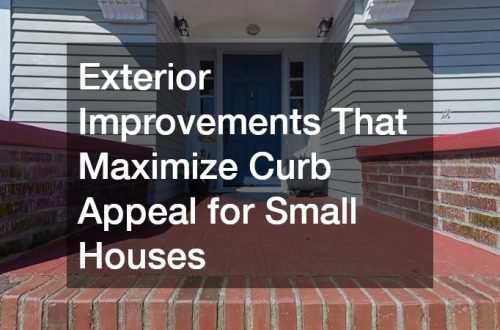Creating Your New Home Addition Plan
Expanding your home is a major milestone and one that can bring substantial rewards when planned properly. A home addition remodeling project offers the opportunity to enhance your living space, accommodate a growing family, or even add to your property’s resale value. However, as exciting as it may be, a successful remodel doesn’t happen by chance—it’s the result of thoughtful planning, smart budgeting, and working with the right professionals. Every decision you make along the way will impact the function, cost, and outcome of the final space, so it’s essential to enter the process informed and prepared.
Home addition remodeling requires balancing practical needs with long-term vision. You’ll need to think beyond design preferences and consider logistics like space usage, building permits, structural limitations, and neighborhood regulations. Whether you’re adding a second story, expanding your kitchen, or building a sunroom, the process involves multiple stages that each demand attention to detail. This guide walks you through every critical step—from assessing your current home’s limitations to finalizing materials and reviewing completed work. By planning and staying engaged throughout the project, you’ll create a seamless addition that feels like a natural extension of your home.

Assessing Your Space and Needs
Before you hire contractors or start gathering inspiration photos, it’s crucial to evaluate how your home currently functions and where it falls short. This assessment forms the foundation of your home addition remodeling plan. Consider which rooms feel cramped, which areas lack storage, or how your family’s needs have changed over time. For example, working from home might require a dedicated office, while growing children might need additional bedrooms. Think not just about what you want now, but what you’ll need in the next five to ten years.
During this assessment, it’s also helpful to think about systems that contribute to your home’s functionality, like your electrical setup or emergency preparedness. If your remodel will include new rooms that increase power demands, you may want to integrate a home generator to support these changes. Including this kind of upgrade in your home addition remodeling plan ensures that your infrastructure grows along with your space. It also future-proofs your home for outages and provides an added layer of comfort and security during storms or unexpected events.
Setting a Realistic Project Budget
Creating a comprehensive budget is one of the most important steps in home addition remodeling. Your budget not only sets financial boundaries but also helps shape the scope and priorities of your project. It should account for every cost category, including materials, labor, design fees, permits, inspection costs, and contingencies for unexpected expenses. Many homeowners underestimate the true cost of an addition, which can result in delays or compromises in quality. A detailed budget allows you to plan realistically and make confident decisions throughout the project.
One area that can heavily influence your budget—especially in structural additions—is the roof. Whether your project includes modifying the roofline or tying into an existing structure, it’s essential to consult with roofing contractors early. They can determine whether the current system can support the new build or if reinforcements are necessary. These adjustments can significantly affect both cost and timeline. By involving roofing professionals from the start, you ensure your home addition remodeling stays aligned with your financial plan while meeting structural and safety standards.

Choosing the Right Design Style
The design of your home addition should do more than reflect personal taste—it should harmonize with your existing structure and enhance the flow of your home. An inconsistent design can make the new addition feel like an afterthought rather than an intentional improvement. That’s why it’s important to choose a style that matches or complements your home’s current architecture, finishes, and materials. This not only creates a visually unified space but also improves resale appeal, as buyers often look for seamless transitions in extended floorplans.
Beyond aesthetics, design should also factor in how you plan to use the space. For example, if one of your goals is to improve your home’s safety and functionality, incorporating a home security camera into the new addition’s layout can be a smart, unobtrusive upgrade. You can select sleek, integrated models that align with your design style while providing added surveillance for entry points, backyard access, or detached living spaces. Thinking through these details in your home addition remodeling design process ensures your project not only looks great but adds real, practical value to your lifestyle.
Researching Local Building Codes
Building codes and zoning regulations are the backbone of safe and legal construction. Before you commit to any plans, it’s essential to research local ordinances that may affect your home addition remodeling project. These rules can dictate how high you can build, how far from the property line construction must remain, and what permits are required. Skipping this step can lead to fines, permit delays, or, in the worst-case scenario, being forced to tear down part of your new structure. Taking time to understand local requirements will save you headaches down the line.
If your property has a history of moisture issues, fire damage, or prior renovation challenges, a consultation with a restoration company may offer valuable insights. These professionals are familiar with local compliance standards, including fire codes, flood zone regulations, and structural rehabilitation guidelines. They can help you identify potential red flags early and make necessary adjustments to your plans. Incorporating this level of diligence ensures your home addition remodeling stays legally compliant and avoids any structural vulnerabilities, both now and in the future.

Hiring Qualified Remodeling Professionals
The team you choose for your home addition remodeling project can make or break the entire experience. While it’s tempting to base decisions solely on price, experience, communication skills, and professionalism are far more important in the long run. Qualified professionals understand how to manage timelines, navigate building codes, and coordinate the various trades needed to bring your project to life. From architects and designers to general contractors and specialists, each person you hire plays a role in executing your vision while maintaining safety and quality.
If your addition includes expanding or modifying heating and cooling zones, bringing in a certified HVAC service provider early in the planning process is essential. They can evaluate your current system’s capacity and determine whether additional ductwork, new units, or upgraded thermostats will be needed. Incorporating HVAC considerations upfront helps avoid uneven temperatures or inadequate airflow in the newly added space. With the right professionals on board, your home addition remodeling will not only look seamless but also operate efficiently and comfortably year-round.
Creating a Detailed Project Timeline
A detailed project timeline serves as the blueprint for how your home addition remodeling will unfold from start to finish. This timeline should outline every major milestone, including design approval, permitting, site preparation, construction phases, inspections, and final walkthroughs. Having this structure allows you to monitor progress, hold contractors accountable, and anticipate periods of inconvenience. It also helps coordinate the delivery of materials and the scheduling of subcontractors so the project moves forward without unnecessary delays.
One common area where timing becomes crucial is with windows installations. Custom window orders often come with long lead times, and delivery delays can stall other parts of the remodel, such as insulation, drywall, or painting. Including window measurement and ordering early in your timeline allows everything else to move forward without disruption. In your home addition remodeling plan, careful attention to the order of operations—like when windows need to be framed and fitted—ensures that the entire project runs smoothly and stays on track.

Selecting Materials and Finishes
Choosing the right materials and finishes is where your home addition remodeling project begins to take shape aesthetically. From flooring and countertops to paint and trim, every selection contributes to the overall feel and function of your new space. Balancing durability, style, and budget is key when making these decisions. Opting for high-quality materials in high-traffic areas can help reduce long-term maintenance and enhance the longevity of your addition.
For example, if your project includes improving your home’s energy performance, you might consult with experts in insulation services. The right insulation not only regulates indoor temperatures but also lowers energy bills and improves comfort year-round. By factoring insulation into your material choices, you can make your home addition remodeling more efficient without sacrificing design. Smart material selection blends form and function to deliver a space that’s both beautiful and practical.
Preparing Your Home for Construction
Before construction begins, your home must be prepped to protect existing spaces and minimize disruption. This preparation can involve relocating furniture, setting up temporary living areas, and protecting floors or surfaces near the work zone. Proper preparation helps prevent damage to your belongings and reduces safety hazards for both workers and your household. The smoother the setup, the easier it is for the construction crew to operate efficiently.
In some cases, outdoor access routes or workspaces may need to be reinforced. If your remodel involves changes to driveways or walkways, incorporating asphalt paving into your prep plan can ensure those surfaces are ready for increased use. This is particularly useful for large projects requiring vehicle access or equipment placement. Taking these steps before construction begins sets your home addition remodeling project up for success, minimizing delays and protecting your investment.
Managing the Remodeling Process
Once construction is underway, staying involved and organized is crucial to a successful home addition remodeling experience. Regular check-ins with your contractor, maintaining a project folder, and reviewing progress at key milestones help ensure that the work aligns with your vision and the agreed-upon plans. Clear communication with everyone involved—from subcontractors to designers—helps you catch potential issues early and resolve them quickly, keeping the project on time and within budget.
For exterior upgrades such as patios, balconies, or elevated extensions, working with professional deck designers can add value and functionality to your space. These specialists can help integrate outdoor living elements into your remodel, offering layouts and materials that match both your aesthetic and practical needs. Involving deck designers in the active management phase of your home addition remodeling ensures that outdoor features are seamlessly incorporated, not treated as afterthoughts.
Reviewing the Final Work and Punch List
The final stage of any home addition remodeling project is the walkthrough and punch list review. This is your opportunity to examine the completed work, note any remaining issues, and ensure that everything meets agreed-upon specifications. Addressing any concerns before signing off prevents costly callbacks and ensures you’re fully satisfied with the result. This step also allows you to confirm that safety, quality, and functionality are all up to standard.
If your project included new wiring, lighting, or panel upgrades, residential electricians should conduct a final inspection to certify the electrical systems. Their sign-off ensures your addition meets code and functions safely, whether it includes recessed lighting, outlets, or smart home features. A licensed electrician provides peace of mind that the final stage of your home addition remodeling is safe, reliable, and ready for everyday use.
Implementing Your New Home Addition Remodeling Plan
Planning a home addition remodeling project requires attention to detail, patience, and a clear understanding of your goals. From the earliest stages of assessing your space and setting a realistic budget to managing construction and completing final walkthroughs, each step builds upon the last. Rushing through decisions or skipping essential phases can lead to delays, overspending, and unsatisfactory results. On the other hand, thoughtful planning and the right team of professionals help transform your home in a way that adds comfort, style, and lasting value.
Whether you’re expanding for more room, modernizing outdated spaces, or increasing your home’s resale appeal, a well-planned home addition remodeling project can significantly improve your quality of life. By working with skilled specialists—from HVAC service providers and restoration experts to deck designers and electricians—you ensure that your addition blends seamlessly into your home. When every element is approached with purpose and preparation, the result is a living space that feels natural, functional, and fully your own.





